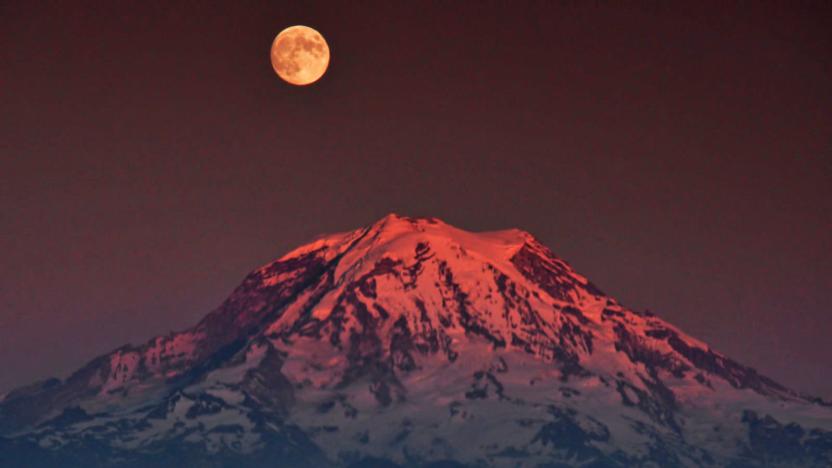lro
Latest

Privately-owned Moon lander crashes in historic attempt
Private spaceflight isn't quite ready to mark another milestone. SpaceIL's Beresheet lander has crashed on the Moon after mission controllers lost communication during its descent to the lunar surface. It did successfully take a selfie on the way down, but its experiments are a bust. It was supposed to measure the local magnetic field and use a NASA-made laser retroreflector array (eight mirrors with quartz cube corners) to relay its position to the Lunar Reconnaissance Orbiter using light.

Water could be extracted all over the Moon, not just at its poles
If we're ever going to colonize another world, we can't rely solely on the supplies we bring with us. We'll have to make use of the resources available at our destination, with water being one of the most important. Not only can we drink it, but add a bit of science and voilà! You've got oxygen to breathe or rocket fuel to fly. Figuring out what resources are where is extremely important, and we've been honing this craft by looking at our celestial ally, the Moon. A study published last year suggested that water may exist in high quantities in the lunar interior, and now researchers have found evidence of water being distributed across the entire satellite, which is at odds with the widely held theory it's concentrated in the colder spots at the Moon's poles.

New lunar maps let you explore the moon from your couch
The existing lunar maps used by the US Geological Survey are two years older than I am. But thanks to the tireless efforts of NASA's Lunar Reconnaissance Orbiter (LRO), Earthbound astronomers can get up close and personal with our planet's Gilligan like never before.

NASA sends the Mona Lisa to the Lunar Reconnaissance Orbiter with lasers
NASA is no stranger to shooting lasers at spacecraft orbiting the moon (seriously), but it's now moving beyond "basic" tasks like tracking their location. The space agency announced yesterday that it has successfully demonstrated one-way laser communication with a satellite orbiting the moon for the first time. For that milestone, NASA chose to send an image of the Mona Lisa, which was transmitted to the Lunar Reconnaissance Orbiter in a series of laser pulses beamed from NASA's Goddard Space Flight Center in Greenbelt, Maryland. Not surprisingly, that means of communication introduced its share of challenges, including interference from turbulence in the Earth's atmosphere. To compensate for that, NASA used what's known as Reed-Solomon coding to reconstruct the image (pictured after the break), which is the same process used for error correction in CDs and DVDs. You can find more details from NASA, and a video explaining the whole process, at the source link below. [Image credit: NASA, Tom Zagwodzki/Goddard Space Flight Center]

NASA creates high-res Moon map, taunts you about your terrestrial tethers
Chances are you will never set foot on the Moon. Sorry, we don't mean to rain on your parade (alright, maybe we do), but the closest you'll ever get is looking at pictures or traipsing around Google Moon. NASA's LRO (Lunar Reconnaissance Orbiter) has been circling our rocky satellite capturing such images, and now 69,000 of them have been stitched together to create the highest resolution topographic map of the lunar surface ever. The Global Lunar DTM 100 m topographic model has a scale of roughly 100 meters per-pixel, allowing researchers to better understand how the crust is formed and accurately scout landing sites for future missions -- be they robotic or manned. Check out the source for a larger image and a few more details.

Visualized: NASA's lunar laser light show
NASA's been quietly shooting lasers at the moon -- and the Lunar Reconnaissance Orbiter, specifically -- for some time now, but it only just opened its Laser Ranging Facility at the Goddard Space Flight Center to the public this weekend and, as you can see, it didn't fail to put on a show. Of course, the lasers do more than provide the backdrop for all-night NASA raves (we're guessing), they also measure the precise location of the LRO and ensure the accuracy of the lunar maps its generates.




